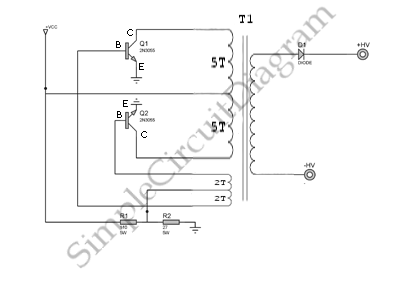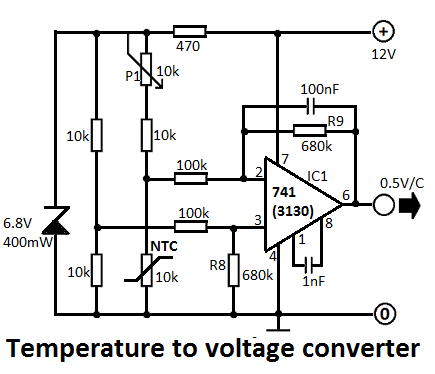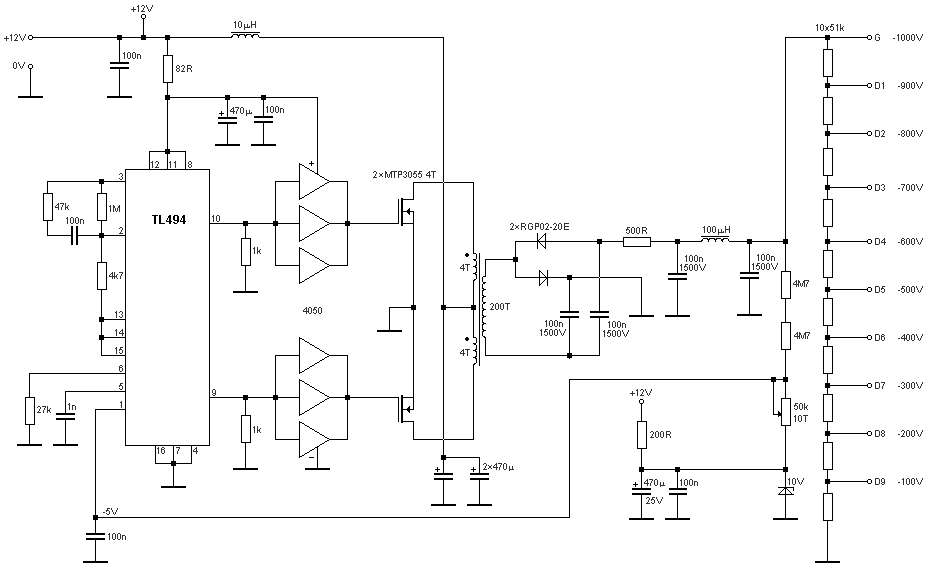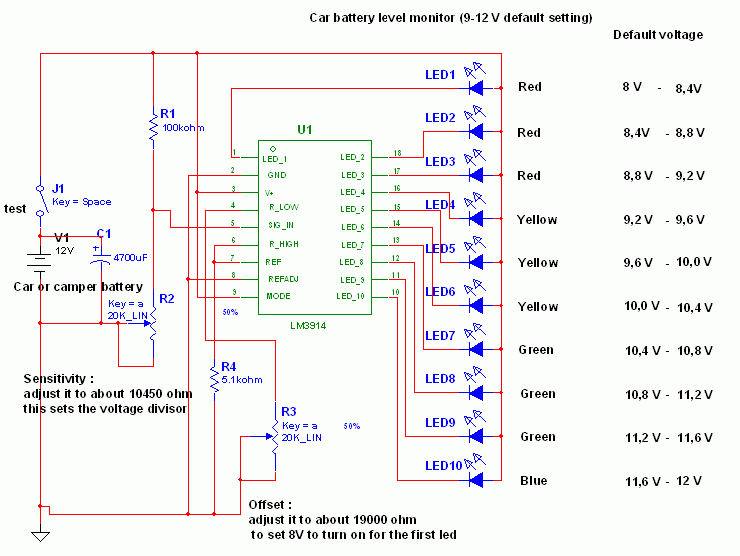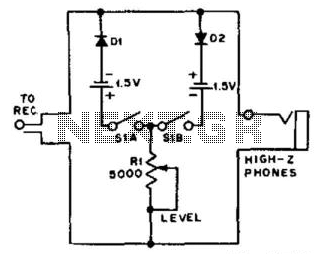
Simple voltage doubler

This circuit doubles the available battery voltage using an LTC1044 switched-capacitor voltage converter. It is designed to power low-power 74-CMOS (3 to 15 V) equipment for extended periods from two small 1.5 V cells. The efficiency exceeds 90% for load currents below 1.75 mA. Output voltage is shown in relation to loading, indicated as VOUT = 6 V.
The LTC1044 is a versatile switched-capacitor voltage converter that operates by transferring charge between capacitors to achieve voltage multiplication. In this application, it effectively doubles the input voltage, which is particularly useful when powering devices that require higher voltage levels than what is provided by standard battery cells.
The circuit configuration typically includes two main capacitors, a switching control circuit, and the necessary passive components for optimal operation. The capacitors are charged and discharged in a controlled manner, allowing the circuit to generate a stable output voltage. When powered by two 1.5 V cells, the LTC1044 can produce an output voltage of approximately 6 V, which is suitable for most low-power CMOS devices.
Key considerations in the design include ensuring that the load current does not exceed the specified limit of 1.75 mA to maintain high efficiency. The efficiency of over 90% is particularly noteworthy, as it allows for prolonged operation of the connected devices without the need for frequent battery replacement or recharging.
The output voltage versus loading characteristics, as indicated in the referenced figure, provide essential insights into how the circuit performs under varying load conditions. This performance data is critical for engineers when selecting components and designing systems that rely on this voltage conversion technique. Overall, the LTC1044 circuit is an effective solution for applications requiring a higher voltage supply from compact battery sources.This circuit doubles available battery voltage using an LTC1044 switched-capacitor voltage converter. The circuit will drive low-power 74-CMOS (3-to 15-V) equipment for extended periods of time from two small 1.
5-V cells. Efficiency exceeds 90% for load currents below 1. 75 mA. Figure 8-7B shows output voltage versus loading (shown as VOUT=6 V). 🔗 External reference
The LTC1044 is a versatile switched-capacitor voltage converter that operates by transferring charge between capacitors to achieve voltage multiplication. In this application, it effectively doubles the input voltage, which is particularly useful when powering devices that require higher voltage levels than what is provided by standard battery cells.
The circuit configuration typically includes two main capacitors, a switching control circuit, and the necessary passive components for optimal operation. The capacitors are charged and discharged in a controlled manner, allowing the circuit to generate a stable output voltage. When powered by two 1.5 V cells, the LTC1044 can produce an output voltage of approximately 6 V, which is suitable for most low-power CMOS devices.
Key considerations in the design include ensuring that the load current does not exceed the specified limit of 1.75 mA to maintain high efficiency. The efficiency of over 90% is particularly noteworthy, as it allows for prolonged operation of the connected devices without the need for frequent battery replacement or recharging.
The output voltage versus loading characteristics, as indicated in the referenced figure, provide essential insights into how the circuit performs under varying load conditions. This performance data is critical for engineers when selecting components and designing systems that rely on this voltage conversion technique. Overall, the LTC1044 circuit is an effective solution for applications requiring a higher voltage supply from compact battery sources.This circuit doubles available battery voltage using an LTC1044 switched-capacitor voltage converter. The circuit will drive low-power 74-CMOS (3-to 15-V) equipment for extended periods of time from two small 1.
5-V cells. Efficiency exceeds 90% for load currents below 1. 75 mA. Figure 8-7B shows output voltage versus loading (shown as VOUT=6 V). 🔗 External reference
